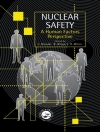CHECK DAM CONSTRUCTION FOR SUSTAINABLE WATERSHED MANAGEMENT AND PLANNING
Authoritative and comprehensive reference on the potential for watershed development through the use of check dams
Check Dam Construction for Sustainable Watershed Management and Planning summarizes current knowledge of check dams as key soil and water conservation structures in some of the most sensitive and vulnerable ecosystems in the world, as exemplified by the Mediterranean area and the Chinese Loess Plateau, providing detailed information on check dam design and watershed planning, the use of advanced modeling techniques, challenges in dam construction and how to overcome them.
The work integrates decades of research in the field of soil and water conservation and gully management, including advanced studies in check dam construction and watershed management. It also covers important new techniques and methods, such as hydrological modeling, isotope tracing, and more.
To aid in reader comprehension, the five highly qualified editors have divided the work into three distinct sections. Sections I and II focus on the experience gained from the erosion hotspots in the Chinese Loess Plateau, whereas Section III expands the scope to other regions with different functions for check dams, including headwater ecosystems and alpine environments.
Sample topics covered in Check Dam Construction for Sustainable Watershed Management and Planning include:
* The regulating effect of check dam systems on sediment redistribution and the formation and development of dam systems in small watersheds
* Water and soil conservation made possible by check dam construction and sediment source analysis of water-sediment retarding effects of check dams
* The regulation of check dam systems on the erosion dynamic process and the mechanism of erosion reduction by check dams
* Flood control risk assessment on warping dam systems and the development and utilization model of check dam systems
With its systematic coverage of all aspects of dam construction and maintenance, Check Dam Construction for Sustainable Watershed Management and Planning supports decision making by local authorities and can also be used as a professional guide for ecologists, hydrologists, and water resource managers.
Spis treści
Notes on Contributors
Preface
1 The formation and development of a dam system in a small watershed in the Loess Plateau
2 Water and soil conservation by check dam construction
3 Regulating the effect of a check dam system on sediment redistribution
4 An analysis of sediment sources and water-sediment retarding effects of check dams
5 The regulation of check dam system in erosion dynamic process
6 The mechanism of erosion reduction by check dam
7 The mechanism of water damage of check dam
8 Flood control risk assessment on warping dam Systems
9 Development and utilization model of a check dam system
10 The safety distribution of check dam system and potential of check dam construction
11 Design of torrential barriers: an Austrian perspective
12 Effect of check dams on sediment connectivity
13 French experience with open check dams: Inventory and lessons learnt through adaptive management
14 Design of open check dams and their application in the Wenchuan earthquake area
15 Prevention and Mitigation against Debris Flow and Woody Debris in Japanese Design Using a Steel Pipe Open Sabo Dam
16 Determining the optimal distance of check dams, case study: Shirkuh River, Iran
O autorze
Zhanbin Li, State Key Laboratory of Eco-hydraulics in Northwest Arid Region, Xi’an University of Technology, China.
Peng Li, State Key Laboratory of Eco-hydraulics in Northwest Arid Region, Xi’an University of Technology, China.
Yang Yu, Jixian National Forest Ecosystem Observation and Research Station, CNERN, School of Soil and Water Conservation, Beijing Forestry University, China.
Peng Shi, State Key Laboratory of Eco-hydraulics in Northwest Arid Region, Xi’an University of Technology, China.
Guillaume Piton, University Grenoble Alpes, The French National Institute for Agriculture, Food and Environment (INRAE), Torrent Control, Snow and Avalanche Research Unit (ETNA), Grenoble, France.












